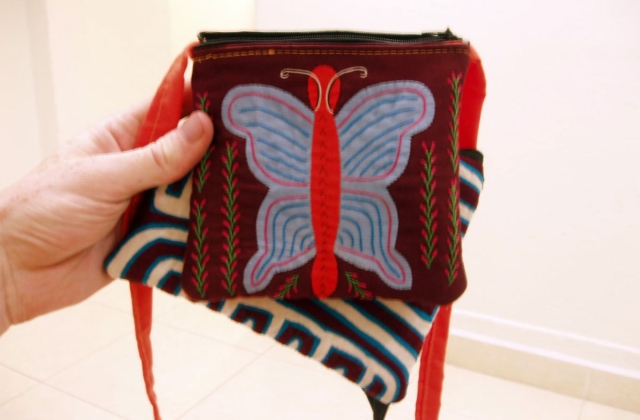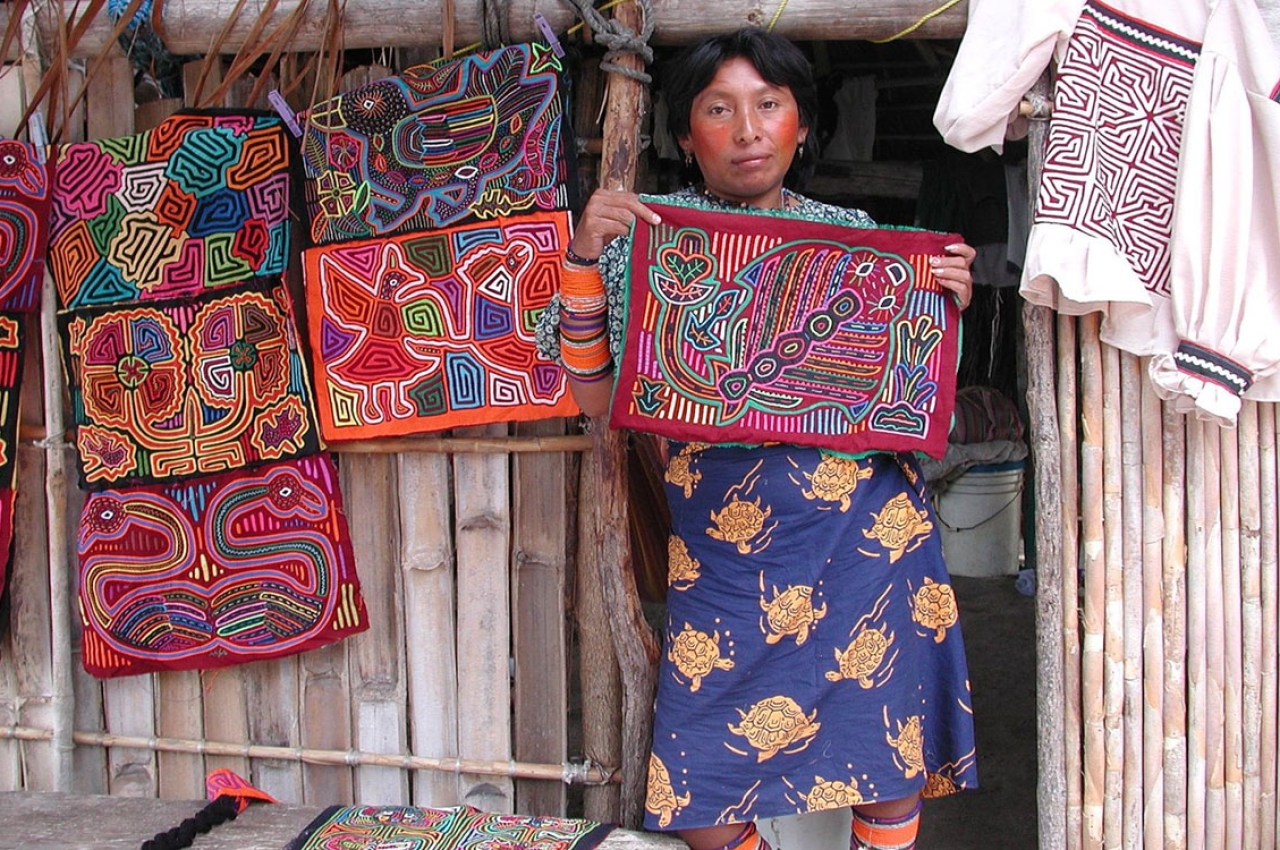A stunning one-of-a-kind molas is one of the best travel souvenirs you can get on your tour of Colombia. Molas, vibrant multi-colored cloth panels, are crafted and sold by the Kuna tribes in Colombia and they serve many uses from fashion to function. Take a look below to learn more about these must-grab souvenirs for yourself and your friends during your Colombian holiday.
A brief history of molas
Known as clothing staples for women in the Kuna tribes, these tightly woven cotton panels depict folklore imagery, tribal traditions and the history of the Kuna people.
And although mola translates into the word "clothing", molas actually got their start in body painting. Before transferring the designs to cloth years later, in the later 1800s, indigenous tribes would paint the same images using brightly hued pigments to cover their bodies.
Today, molas are sewn, instead of painted, but the integrity of the work still remains as the Kuna women develop their textiles following traditional practices. The first molas were dark blue with red accents; over time, multi-coloured rainbow designs emerged. Popular cultural references can even be seen in the design motifs as well. However, for those seeking the more original pieces, panels with red, yellow, dark blue and black as the colours are still considered to be the most traditional.
The Kuna people sell different variations of molas. Some are on pillows, some are panels that can be hung on a wall and some are embroidered on purses. The possibilities are truly endless. However, you will not ever see molas available to tourists as clothing items as the Kuna people consider this to be sacred and they prefer to not have tourists wear the garments in the traditional ways.
Fun fact: molas can only be sold in regions where the Kuna people live including Colombia, the Panama Canal and the Kuna Yala Islands. So definitely grab your piece while in Colombia because you won't find them in your nearby shopping mall.
 photo by Kafka4prez (via Creative Commons)
photo by Kafka4prez (via Creative Commons)
Molas and construction
Molas are created by the women in the Kuna tribes and young ladies start crafting when they hit puberty. Today, Kuna women have the choice to either dress in the traditional or western styles but many choose to stay with the traditional clothing.
During the Spanish colonisation, the loom and cloth-making capabilities were introduced to the Kuna tribes and this is when they started transferring their designs to cloth first by using paint then later by using reverse application.
Reverse application entails layering two to seven pieces of different coloured cloth together then sewing them and cutting away parts of each layer until a beautiful design is formed. The edges of these cuts are then sewn down. The mark of a quality mola lies in the stitching detail as the higher quality ones will have nearly invisible stitches having been sewn with tiny needles.
Just like building a painting, larger pieces of a design are formed first. So the top layer will have the largest shapes cut out and the detail layers will be the subsequent layers going down to the last piece of cloth in the bunch. Of course, the more colours/layers, the higher the quality as more time has gone into the piece.
The most common pieces sold to tourists are two-tone or two-layered panels as they are easier to produce but the more skilled pieces are also available for a higher price. Construction can take the maker anywhere from two weeks to six months to complete.
Where to buy
After your customized adventure tour in Colombia, make sure to reach out to your guide and he or she will lead you to the traditional stalls in the Bogota markets where you will be able to purchase your one-of-a-kind mola.

 photo by Johantheghost (via Creative Commons)
photo by Johantheghost (via Creative Commons)